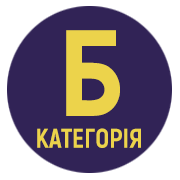CREATIVE ACTIVITIES IN MUSIC LESSONS IN PRIMARY SCHOOL
Abstract
The article reveals the importance of creative activity in primary school music lessons. Creative activity of primary school pupils is interpreted as the process of creating a new, original product, in which the pupil realises creative abilities, reveals his imagination, imaginative thinking, combinatorial abilities, shows initiative, variability of actions, independent search. The authors have systematised the forms of creative activity in primary school music lessons into intellectual, emotional and plastic, musical and performing, musical and visual, musical and literary, and game activities. The intellectual form of creative activity includes: formulating one's own thoughts and impressions of the listened to pieces; unique interpretation of musical works. Emotional and plastic forms include: demonstration of emotions through movements to music; use of gestures, pantomime, dance to convey the character of characters, fairy tale heroes or images in music, independent staging of a song. Musical performance forms include: experimentation with various sounds; creation of a rhythmic background for compositions; creation of rhythmic accompaniment to learnt songs, dances, games; rhythmic improvisations «question – answer», rhythmicisation of words, phrases, poems; melodic improvisations on given sounds, to a given rhythm; creation of exercises for vocal singing, own melodies and variations of melodies; chanting names, words, addresses; creating a continuation or ending of a musical phrase of a chant, song; completing a phrase (construction); creating an introduction, ending; imitating the natural world and mechanisms; creating sound and noise plays, a musical phrase or melody from beats, a rhythmic or sound (noise) story, etc. Musical and visual forms include: graphic representation of melodic lines in various shapes; selection of colours that correspond to musical timbres, images or emotions; depiction of musical forms through graphics or applications; use of colour and shape to express the drama of a musical work; composition of melodies to poems or creation of poems to musical motifs; designing and visualising costumes for characters in musical works; creating illustrations for children's songs or fairy tales; designing programmes, posters for concerts, musical performances, creating costume sketches for characters in operas, ballets, musicals, and fragments of scenery. Musical and literary forms include: selecting or writing poems to music, compositions-impressions about music, compositions on musical and aesthetic themes; creating fairy tales, legends that students read expressively in class; creating plots for musical works. The authors named the following game forms of creative activity: «Transformer», «Question – Answer», «Melodise the dialogue», «Singing roll call», «Add a sub-voice», «Come up with a melody», «Auxiliary movements», «Let's become composers», etc.
References
Боднарук І. (2021). Організація художньо-творчої діяльності учнів на уроках музичного мистецтва. Духовність особистості: методологія, теорія і практика. Вип. 101. 6–13.
Олексюк О.М. (2006). Музична педагогіка: навчальний посібник. Київ: КНУКіМ.
Лазаревська О.М., Науменко, С.І. (1994). Творчість дитини і музичне виховання. Початкова школа. 11. 16–18.
Ростовський О.Я. (2011). Теорія і методика музичної освіти: навчально-методичний посібник. Тернопіль: Навчальна книга – Богдан.
Матвієнко С.І. (2017). Теорія та методика музичного виховання дітей дошкільного віку: навчальний посібник. Ніжин: НДУ ім. М. Гоголя.
Гумінська О.О. (2003). Уроки музики в загальноосвітній школі: методичний посібник. Тернопіль: Навчальна книга – Богдан.
Мартинова В.П. (2019). Мистецтво: особливості викладання в початковій школі: навчально-методичний посібник. Харків: Друкарня «Мадрид».
Денисюк І.С. (2016). Музична імпровізація: від учителя до учня. Мистецтво та освіта. 2. 18–21.
Лебедєв В.К. (2004). Використання народних музичних інструментів у загальноосвітній школі: навчально-методичний посібник. Вінниця: Нова книга.
Ткачук О. (2012). Використання дитячих саморобних музичних інструментів на уроках музики. Рідна школа. 10. 47–48.
Назаренко М.П. (2011). Музично-ритмічне виховання молодших школярів на уроках музичного мистецтва. Наукові записки КДПУ. Педагогічні науки. Вип. 101. 216–223.
Шуть М.М. (2018). Класифікація музичних ігор як педагогічного інструментарію формування творчих умінь молодших школярів. Мистецтво та освіта. 2. 2–7. http://nbuv.gov.ua/UJRN/mtao_2018_2_2





